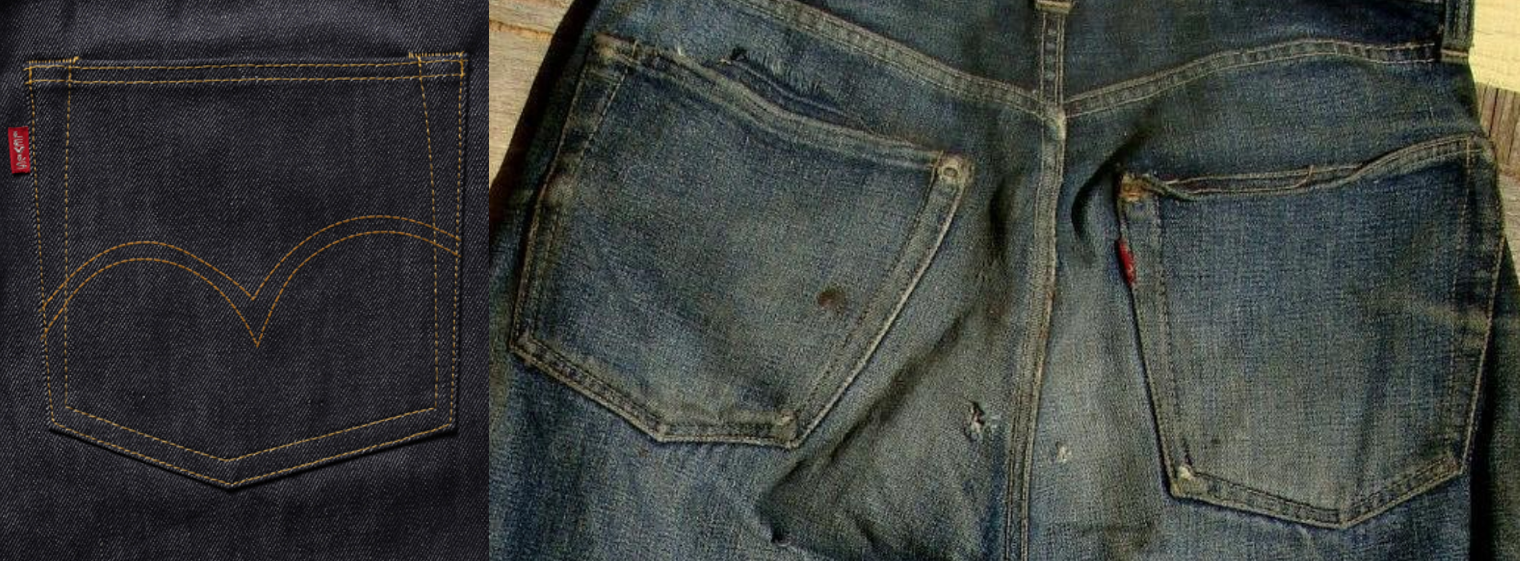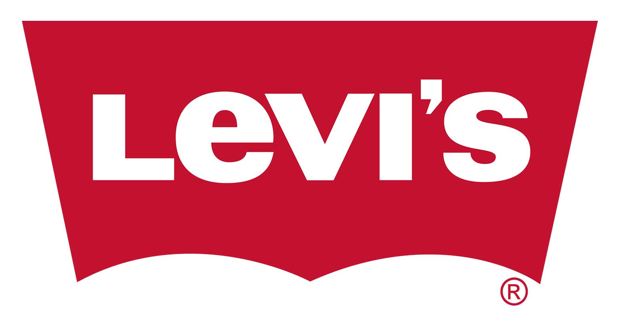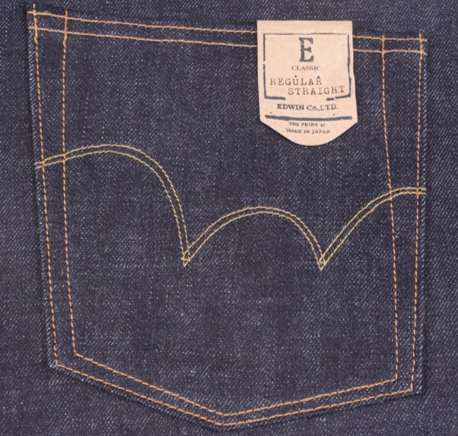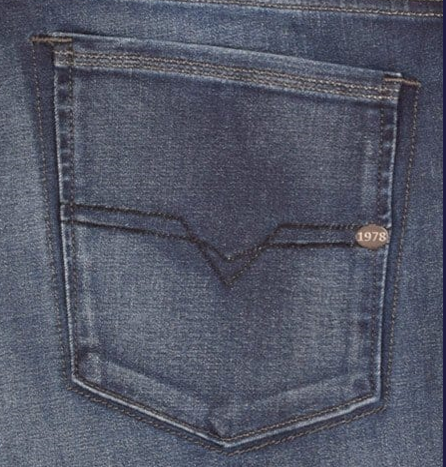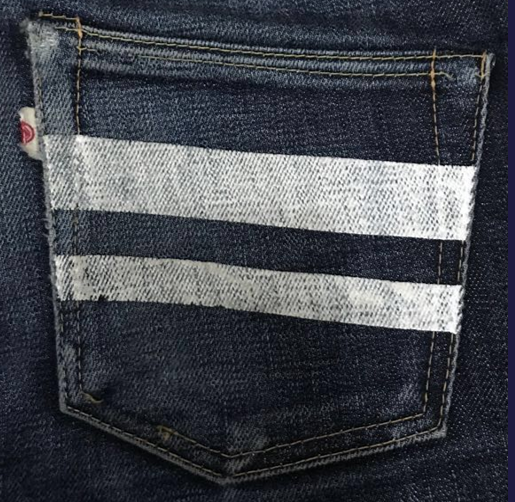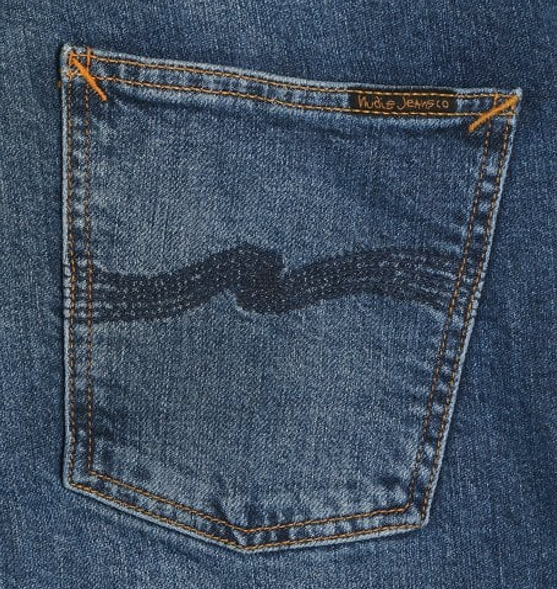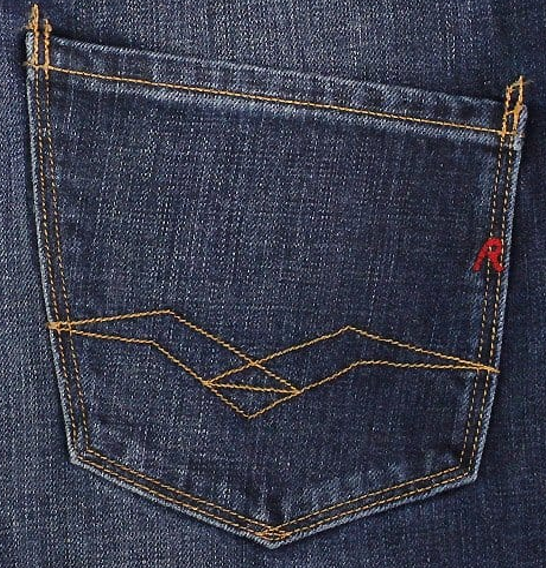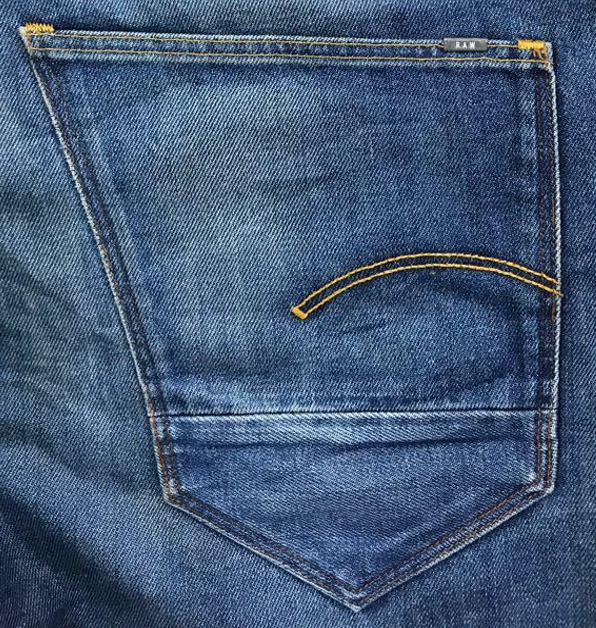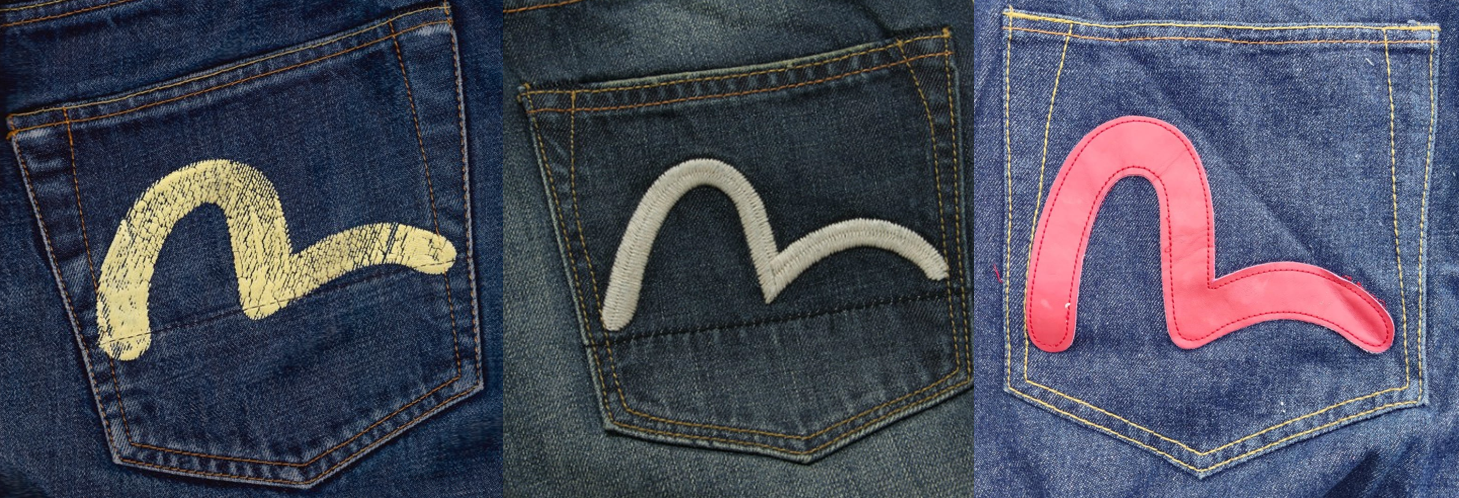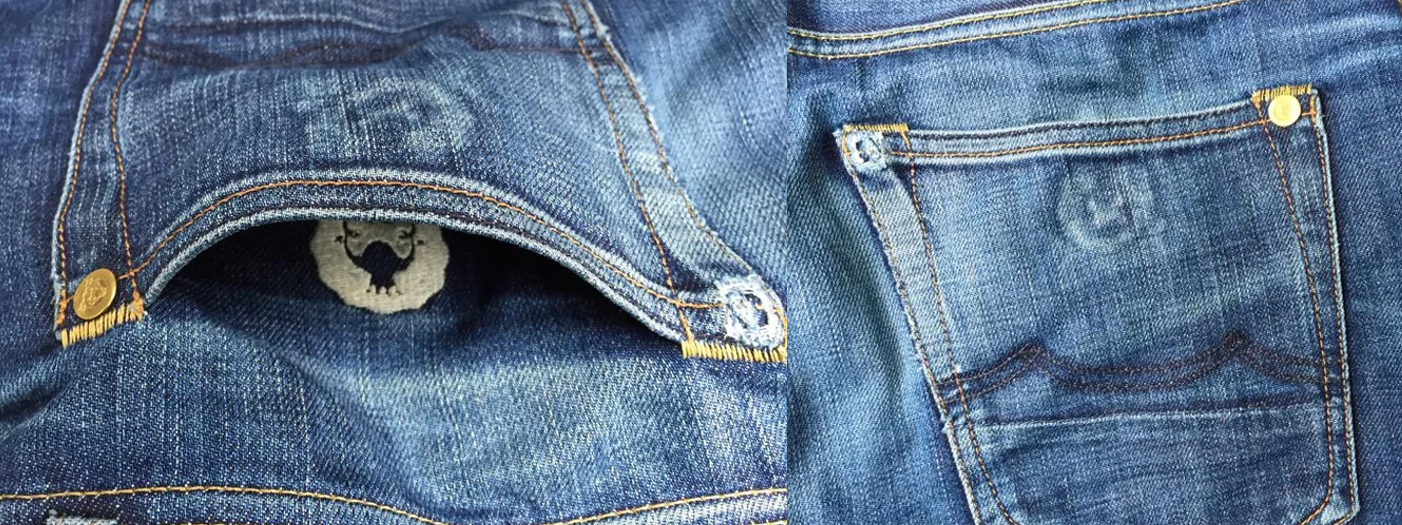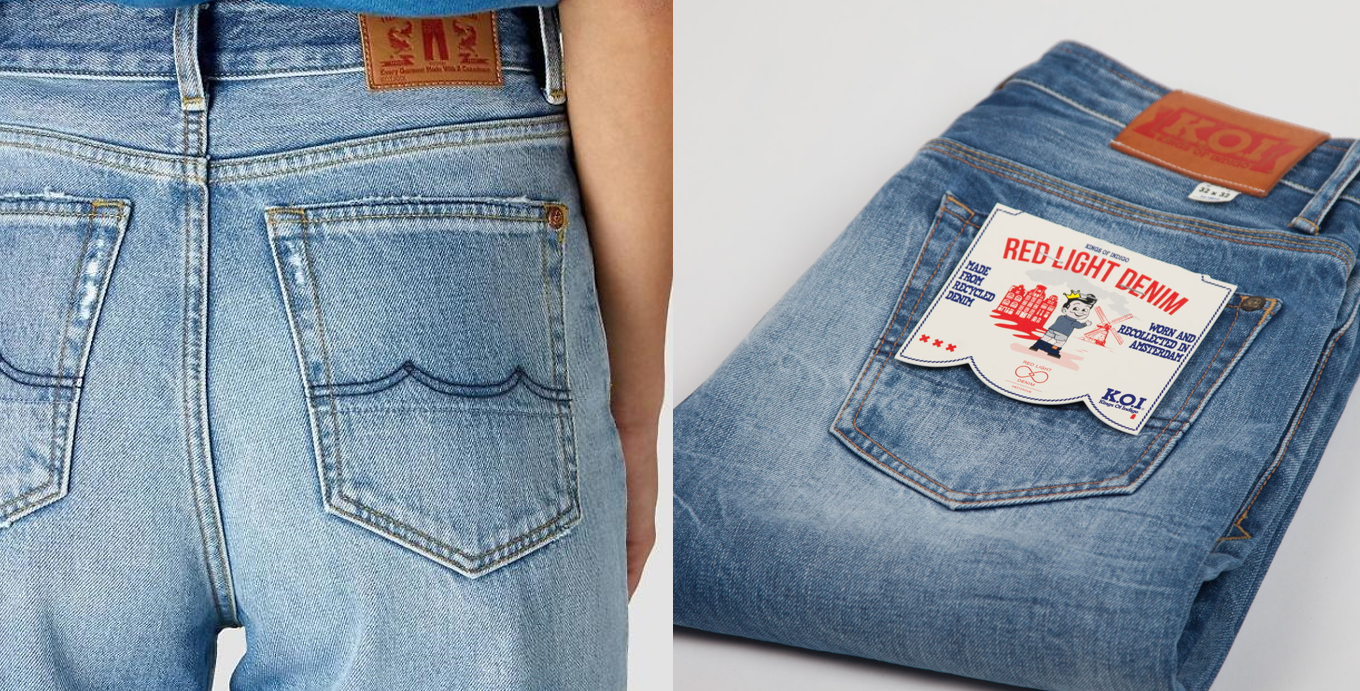Arcuates
Arcuate is the name given to the decorative stitch placed on back pockets. It is also known as a back pocket signature and having a distinctive arcuate can be a staple of a denim brand’s identity.
One of the most well known arcuate is from Levis who are thought to have coined the term in the 1970s, stemming from the Greek word meaning ‘bow’. It is believed to have been featured on their back pockets since the beginning in 1873, although the origins of the design is unknown due a loss of company records caused by an earthquake and fire. Over time the design has evolved slightly and can be used as an indicator to date a pair of Levis jeans.
Originally the design was stitched with a single needle machine and stitched free hand. This meant there were variances in the arc dependent on the operator. Prior to their trademark of the arcuate in 1943, many jean brands of the time also followed the same design.
During World War II, the arcuate was felt to be so crucial to the Levis brand even rationing restrictions couldn't eliminate the back pocket detail. The arc was painted on due to the conservation of threads for the war effort. Eventually the paint would wash off, which is why vintage Levis from this time can be found with no arcuate.
The design became uniform following the introduction of double needle sewing machines in 1947. This stitch also created the missed stitch diamond that is recognisable as the modern design still used today.
The arcuate detail informed the Levi’s® housemark known as the “batwing”, designed by Walter Landor & Associates in 1967. The shape is literally taken from the top half of the back pocket with the curve of the arcuate forming the bottom.
Many denim brands started using similar arcuate designs, until Levi’s trademarked theirs in 1943. After which many denim brands created their own distinctive designs, sometimes not only created as a design feature but as a practical way to help secure pocket lining to reinforce the pockets. These designs have become key brand identifiers for many denim players, such as Wrangler’s ‘Western Wear’ W and Lee’s Lazy- S.
Some brands have also played around with different techniques; recreating their arcuate in print, foil, applique, embroidery, laser, embossing and more.
Examples of different techniques from Evisu
Dutch brand, Kings of Indigo, included a hidden embroidery inside their back pocket which imprints to the pocket after multiple washes and wear. They also created back pocket plasters which mirrored the shape of their arcuate. A design created to represent water and the natural habitat of the koi carp.
To this day, a signature arcuate can help brand identification and authenticity in the denim world.


